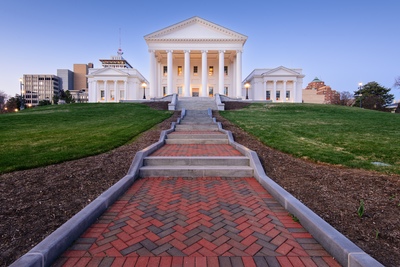
State Government Affairs, Elections & Campaigns
How Lieutenant Governors Are Selected (And Why It Matters)
December 10, 2025 | Bill Kramer
September 29, 2020 | Bill Kramer

Key Takeaways:
This is the fourth of several 2020 state elections preview posts we’re publishing over the next few weeks. Previously, we discussed legislative supermajorities, state legislative control and the gubernatorial races. You can keep track of all the latest information on our 2020 state elections landing page.
A political party holds a “trifecta” in a state when it controls both state legislative chambers as well as the governor’s office. Currently, Republicans have trifectas in 21 states, Democrats hold 15 state trifectas, and the remaining 14 states are under split control. When one party controls both the legislature and governor’s mansion in a state, that party has a clear path to pass their preferred public policies without any major roadblocks from the opposition party.
On November 3, political parties will have opportunities to gain and break up trifectas in the states. For this analysis, we’ll use the legislative and gubernatorial projections produced by election forecasters CNalysis and Cook Political Report, respectively. 
First, let’s address opportunities to break up current trifectas. Democrats can break up current Republican trifectas in Iowa by gaining control of the House (rated a “Toss Up”) and in Arizona by gaining control of either chamber of the legislature (both the House and Senate are rated as “Tilt Democratic”). Republicans aren’t projected to break up any of the current 15 states with Democratic trifectas in 2020.
Second, where are opportunities for parties to pick up fresh trifectas? Republicans can gain a trifecta in Alaska by taking control of the House, where a coalition of moderate Republicans and Democrats currently hold power despite Republicans holding a majority of seats in that chamber (currently rated as “Tilt Democratic”). Republicans also have a good opportunity to pick up a trifecta in Montana if Republican Greg Gianforte can defeat Democrat Mike Cooney in the race to replace term-limited Democratic Governor Steve Bullock (rated as “Toss-Up”). And Republicans have a chance to regain a trifecta in North Carolina if they can defeat incumbent Democratic Governor Roy Cooper (rated as “Lean Democratic”) and hold on to both legislative chambers (House is rated as “Tilt Repubican” and Senate as “Lean Republican”). Democrats’ best chance to pick up a trifecta is in Minnesota if they can flip the Senate (rated as “Tilt Democratic”).
If Republicans have a good night on November 3, we could see them gaining fresh trifectas in Montana and North Carolina by winning governors races in those states and in Alaska by taking control of the House. That results, along with Republicans holding on to all their current trifectas, would give Republicans a total of 24 trifectas to Democrats’ 15. A strong night for Democrats would see them holding on to the governorships in Montana and North Carolina, thus avoiding Republican trifectas in those states, plus gaining a trifecta in Minnesota by flipping control of the Senate and breaking up Republican trifectas in Arizona and Iowa. Such a situation would bump Democrats’ trifectas total to 16 states and drop Republican to 19 trifectas.
For more information, check out MultiState’s 2020 state elections landing page.

December 10, 2025 | Bill Kramer
-238a17-400px.jpg)
December 10, 2025 | Bill Kramer

November 5, 2025 | Bill Kramer